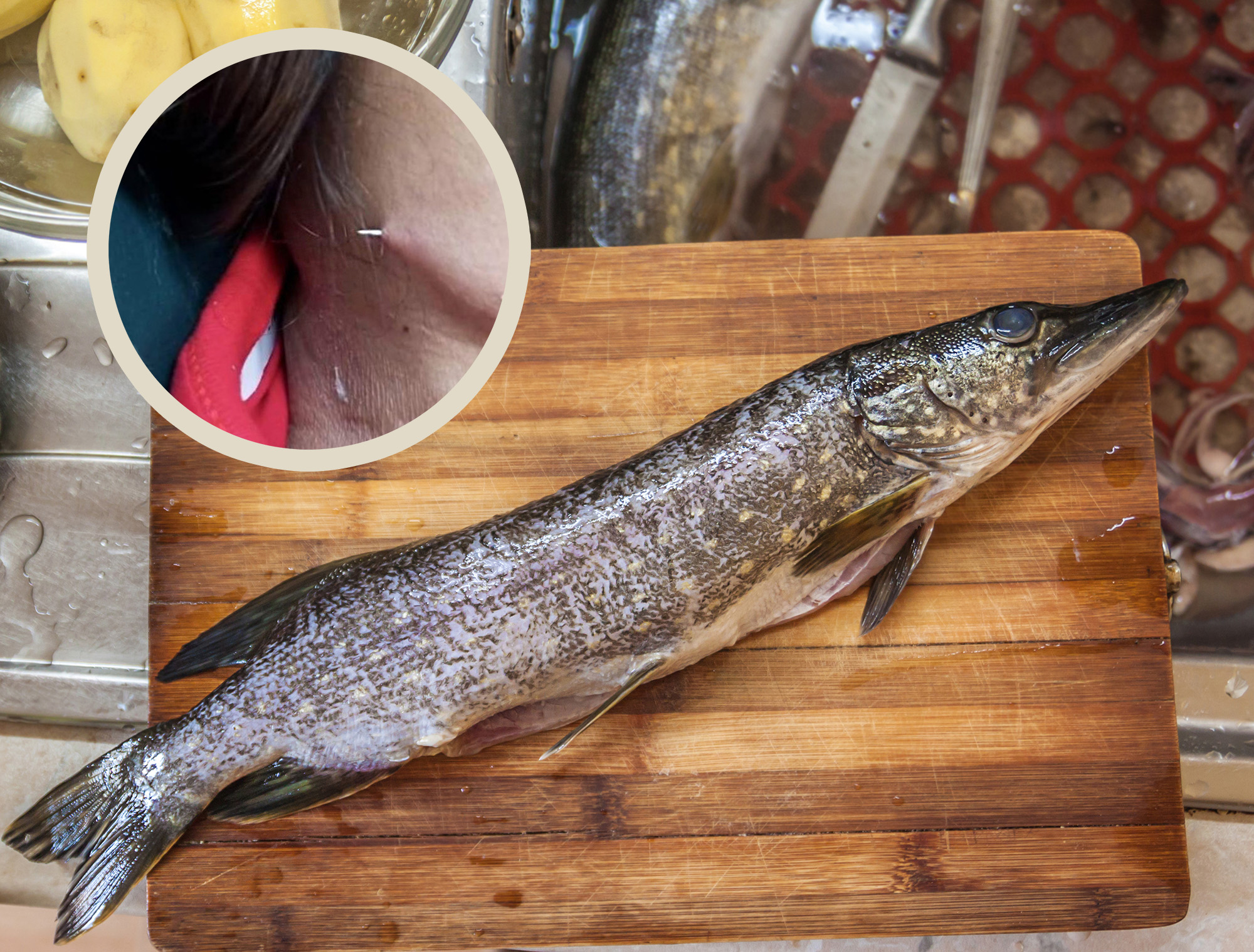Fish Bone Pierces Thai Woman’s Neck — a Cautionary Tale About Fish Consumption

Saying my mom was neurotic when I was a child is putting it lightly. I wasn’t allowed to swim for 30 minutes after eating. Whether I was on my bike, a skateboard, or rollerblades, there were pads on every joint of my body. And if I mentioned that I just got a bone while enjoying a fried flounder dinner — the only fish she’d ever buy — I’d hear, “Spit it out right now! Do NOT swallow it!”
This led me to believe that accidentally sending a fish bone down the esophagus meant instant death by choking. The funny thing is, I wasn’t alone in that belief.
A while back I had the pleasure of chatting with well-known chef, food writer, and outdoorsman, Hank Shaw, on my podcast. We discussed how, by-and-large, Americans shy away from eating fish with bones. In his opinion, it was, in fact, an irrational fear of choking that played a large role in that collective mindset. It’s a pity, of course, because just as cooking bone-in meats adds flavor, a whole-cooked fish is going to be tastier than a fillet. Just ask the Cubans, Japanese, Mexicans, Mediterranean communities, and countless other cultures that don’t prioritize a perfectly clean, white, boneless piece of fish.
Obviously, many of you who happily enjoy whole-fried sea bass, trout, or bluegills on a regular basis are already scoffing. Truthfully, the odds of you choking on a tiny fish bone are slim, but they’re not zero as evidenced by one of the wildest (and possibly the only) stories I’ve ever read about fisheating gone wrong.
Pain in the Neck
According to Vice.com, Sang Lan, a woman from Thailand, made a homemade fish soup. During the dining experience, she felt a fish bone slip down her throat. This apparently didn’t initially bother her as it was a common occurrence. Even when she felt the bone lodge in place she wasn’t concerned, assuming it would eventually work itself free.
Sang Lan tried eating rice and bread crusts — both local folk remedies to dislodge wedged fish bones. That didn’t do anything, and after a few days of discomfort, she finally went to the hospital for an X-ray. Unfortunately, doctors couldn’t see anything out of the ordinary and sent Sang Lan home, and the discomfort continued. Per the story, she thought it might have been healing, but then her neck began to swell. A full two weeks after the meal, Sang Lan felt something hard just under the skin of her neck. As soon as she pressed on it, the sharp edge of the swallowed bone poked through.
Sang Lan returned to the hospital where surgeons removed the 2-centimeter, needle-sharp fish bone. What baffled doctors, however, was that the bone was not lodged in her throat but buried in the muscle tissue of her neck. Sang Lan and her husband vowed to never eat fish again after the incident, but if you happen to be feeling the same way, relax. Let’s look at some facts.
No Soup for Me
In most cases, a fish bone that gets ingested is going to be very small, usually a pin bone or very small rib bone. These are soft enough that your stomach acid will dissolve them, which is why fish pieces that go into a pickling brine with bones intact wind up bone-free by the time you’re ready to put them on a cracker. If you were to eat a whole-fried fish and accidentally get a large rib in your mouth, most of the time you’re going to know it. It seems Sang Lan had one critical issue working against her.
Her fish soup featured a catfish species called Pla Kayaeng and an eel called Pla Lod, both of which, per the article, are notorious for sharp spine and thin bones. The image of the extracted bone looks like one of the sharp, serrated leading pectoral or dorsal bones common on most catfish species — in fact, I’d bet some of you have been jabbed with them over the years. Though there’s nothing wrong with whole preparations of fish with nasty spines, you might not want to use them in a soup.
I’ve made many gallons of stock over the years using whole fish heads and racks, but you strain it many, many times before using it as a soup base or packing it up for the freezer. Though I’ve come around to eating bone-in fish, even I’ll admit that if you offered me a bowl of fish soup that I knew could contain a serving of serrated catfish spine, I’m going to pass. Even if the odds are good that I’d feel the spine and be able to take it out of my mouth, I don’t feel like I’d enjoy the experience much.
Read the full article here









